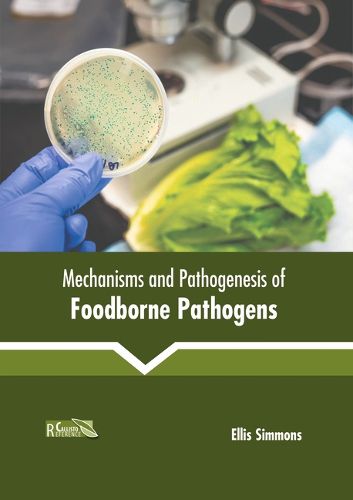Readings Newsletter
Become a Readings Member to make your shopping experience even easier.
Sign in or sign up for free!
You’re not far away from qualifying for FREE standard shipping within Australia
You’ve qualified for FREE standard shipping within Australia
The cart is loading…






Foodborne pathogens are microorganisms that cause illness by invading and damaging the gastrointestinal tract when ingested through contaminated food or water. These pathogens include bacteria, viruses, parasites, and fungi, posing significant public health risks worldwide. They release toxins and trigger immune responses, leading to symptoms like nausea, vomiting, and diarrhea. Symptoms of foodborne illness range from mild gastrointestinal discomfort to severe complications, particularly in vulnerable populations such as the elderly, infants, and individuals with weakened immune systems. Prevention measures include proper food handling, storage, and cooking, as well as maintaining hygiene throughout the food production and distribution chain. Vigilance in food safety practices, coupled with effective surveillance and regulation, is essential to mitigate the spread of foodborne pathogens and protect public health. This book consists of contributions made by international experts on mechanisms and pathogenesis of foodborne pathogens. It will also provide interesting topics for research which interested readers can take up. Students, researchers, experts and all associated with food microbiology will benefit alike from this book.
$9.00 standard shipping within Australia
FREE standard shipping within Australia for orders over $100.00
Express & International shipping calculated at checkout
Foodborne pathogens are microorganisms that cause illness by invading and damaging the gastrointestinal tract when ingested through contaminated food or water. These pathogens include bacteria, viruses, parasites, and fungi, posing significant public health risks worldwide. They release toxins and trigger immune responses, leading to symptoms like nausea, vomiting, and diarrhea. Symptoms of foodborne illness range from mild gastrointestinal discomfort to severe complications, particularly in vulnerable populations such as the elderly, infants, and individuals with weakened immune systems. Prevention measures include proper food handling, storage, and cooking, as well as maintaining hygiene throughout the food production and distribution chain. Vigilance in food safety practices, coupled with effective surveillance and regulation, is essential to mitigate the spread of foodborne pathogens and protect public health. This book consists of contributions made by international experts on mechanisms and pathogenesis of foodborne pathogens. It will also provide interesting topics for research which interested readers can take up. Students, researchers, experts and all associated with food microbiology will benefit alike from this book.